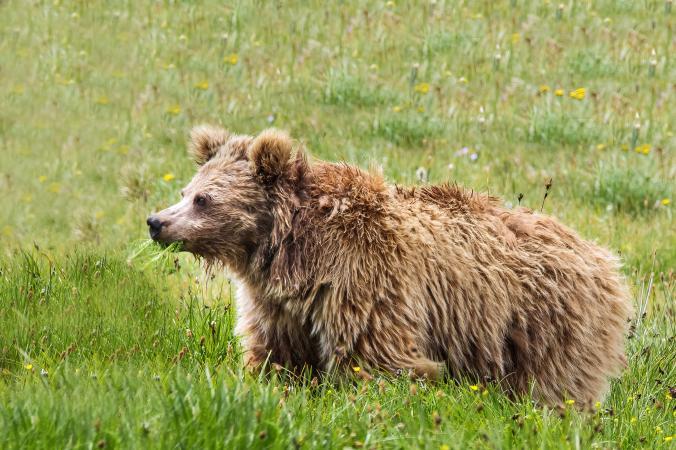The Yeti is Actually Himalayan or Tibetan Bear, DNA Study Concludes

The yeti — a popular, persistent legend of an elusive ape-like giant roaming the Himalayas, has been going around since before the 19th century. Last year, a team of researchers studied DNA from nine samples thought to be of the Yeti and concluded that those samples belong to native bear breeds.
The samples were procured from a variety of sources: a bone found by a spiritual healer, hair from a mummified animal in a monastery, a tooth from a stuffed animal kept in an Italian museum, and other such places. The team, led by Charlotte Lindqvist from the University at Buffalo, also collected a set of 15 DNA samples of Himalayan brown bears from zoos, museums, and Pakistan’s Khunjerab National Park. They compared the Yeti DNA to the Himalayan bear, and also to an international database of genetic data.
Their analysis concluded that eight of the nine samples came from Himalayan and Tibetan brown bears, and the ninth, the tooth from Italy, came from a dog.


While the results of the study were a disappointment for Yeti enthusiasts, they proved significant for understanding the family tree of the local bear population. The Tibetan brown bear and the Himalayan brown bear were assumed to be genetically similar. However, analysis of their DNA showed marked differences. The genetic difference in the Himalayan bear arose around 6,50,000 years ago, probably because of a period of glacier formation segregating the Himalayan breed from the others.
The analysis was focussed on the DNA within the mitochondria, the powerhouse of the cell. This was the first time the entire mitochondrial genome of the rare and endangered Himalayan bear was sequenced and studied.
Although this study established that the well-preserved body parts believed to belong to the yeti are from bears and dogs, it may not be sufficient to dispel the myth altogether.

Ross Barnett, an evolutionary biologist at the University of Copenhagen in Denmark, said that this study made crucial genetic discoveries of vulnerable and endangered Himalayan bears, which had not been done before and can prove valuable to conservation efforts. He added, however, that the legend of the Yeti is likely to live on. “You can’t debunk a myth with anything as mundane as facts,” he told National Geographic. “As long as the stories are told and retold—and bears are glimpsed in other than ideal conditions or leave melting footprints in the snow—there will be stories of Yetis.”
Get the latest reports & analysis with people's perspective on Protests, movements & deep analytical videos, discussions of the current affairs in your Telegram app. Subscribe to NewsClick's Telegram channel & get Real-Time updates on stories, as they get published on our website.
























